Fillet in French means "NET".
FILLED ACCESS is a fairly easy-to-use crochet technique with just two basic techniques: a crocheted column and an air loop. As a result, a kind of grid appears in which empty square cells alternate with filled cells, thus forming a pattern.
The crochet crochet is suitable for embodying a lot of hand-made ideas - it's creating an atmosphere of warmth and coziness in the house, curtains, napkins, tablecloths, pillowcases, bedspreads and light, airy models of summer dresses, sarafans, skirts, T-shirts and tunics ...
Fantasy needlewomen has no boundaries and the patterns are now knitted not only from cotton yarn, threads can be of any thickness and any composition ...
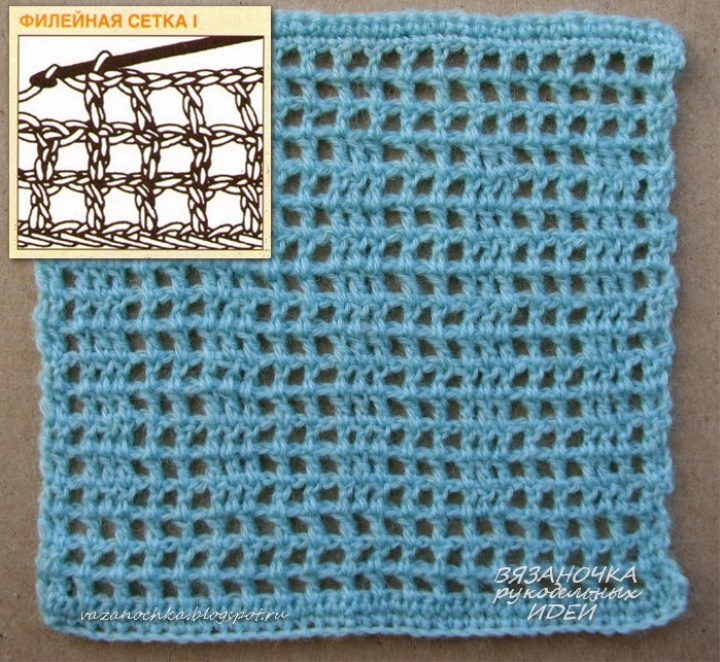
FILM NET 1
It consists of cells with a width of 2 loops, i.e., at the beginning it is required to connect a chain of air loops whose number is twice the number of cells in the circuit +1 the closing loop + the corresponding number of air lifting loops instead of the 1st column of the 1st row.
Each empty cell consists of 1 tbsp. c / n (sometimes it is replaced by patent st.s / n or st. c / 2n) + 1 air. etc., while one loop of the previous row is skipped. Each filled cell consists of 2 st.s / n. If the instructions to the model do not specify otherwise, the bars are executed in the air loops of the previous row.
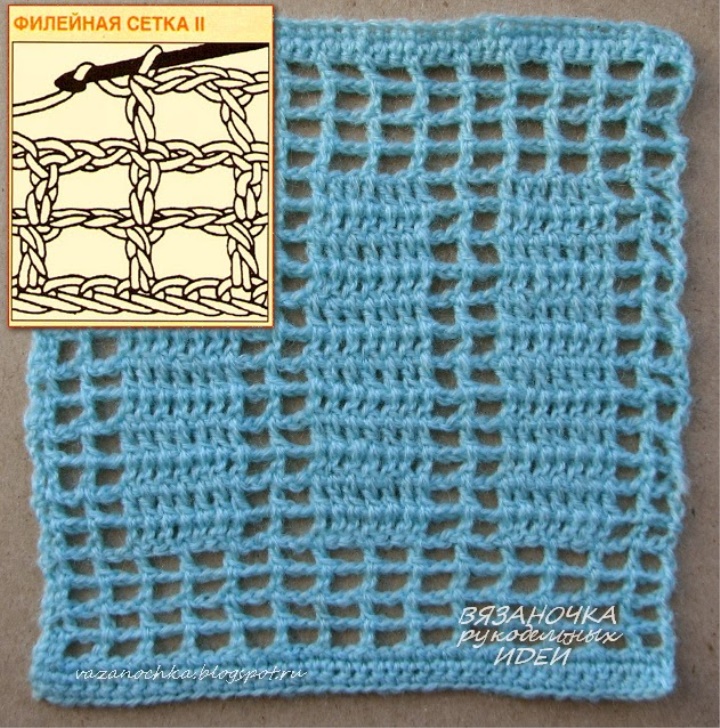
FILING NET 2
The patterns made with such a grid look more prominent, so she got
more widespread. It is performed as a mesh I, but unlike
from the latter here, each cell consists of 3 loops.
An empty cell is formed 1 st.s / n (sometimes it is replaced by a patent item with / n or st.s / 2n)
+ 2 air. P.
The filled cage consists of 3 tbsp. c / n (patent st. or item c / 2n).

ATTENTION! Each row is always to begin and end an additional art. с / н (patent item or item с / 2н). In each row of the 1st st. replace with air lifting loops.
The st.s / n is accepted to be replaced by 3 air. etc., patent art. on 3-4 rd. Art. s / 2n - for 4 air. P.
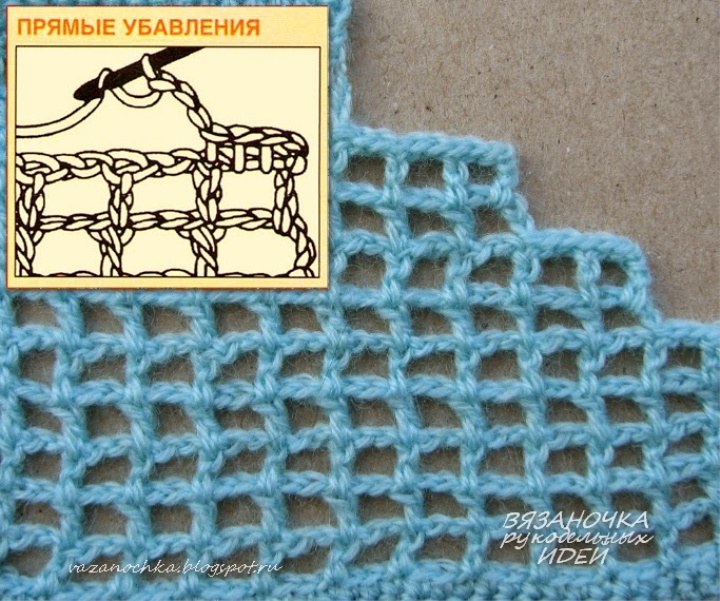
DIRECT DECREASES
If it is necessary to perform decrements at the beginning of the series, and then to connect the rectangular cell, then the loops over which the cells no longer need to be carried out are skipped by executing the connecting bars. Then go to the execution of the 1 st cell,
the required number of air lifting loops. At the end of the row, as many cells are knit as indicated in the diagram.
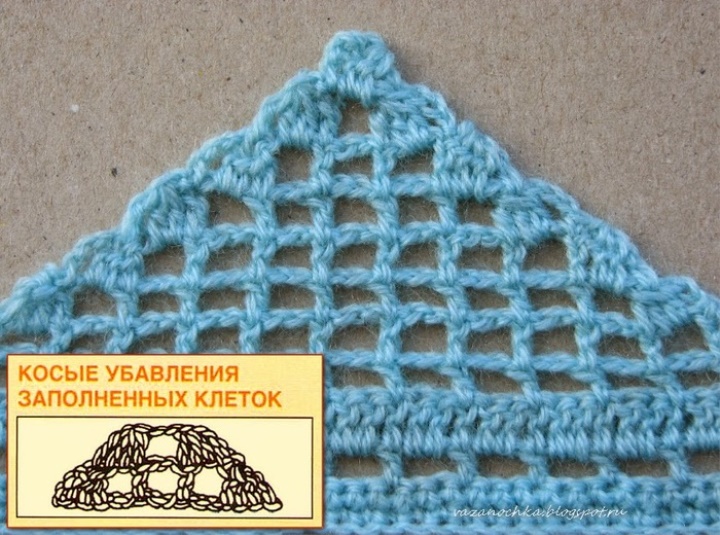
OCCURRING DECOMPOSITIONS OF FILLED CELLS
These decreases are also very simple. For them, first perform 4 air. ascent from the 1st st. c / n and then bind them together with 3 tbsp. s / n (for sirloin I only with 2 items of s / n), made in the next cage. At the end of the row, before the last loop, 3 tbsp. s / n (for sirloin I only 2 items s / n) and tie them together with art. c / 2n, which is connected to the last loop. These decreases make it possible to get a very tidy edge, besides they are simple. Slanting can also be used when it is necessary to reduce empty cells
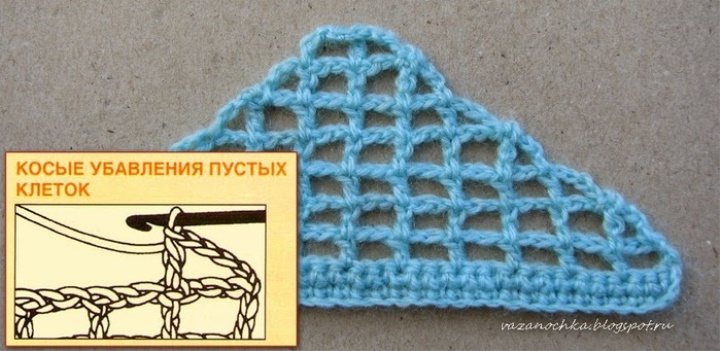
EARLY REMOVAL OF EMERGENCY CELLS
At the beginning of the row, they are knit for 1 lift for ascent. etc. more than usual, then perform 1 tbsp.
in the 2 nd century. grid as shown in the figure. The result is a triangle.
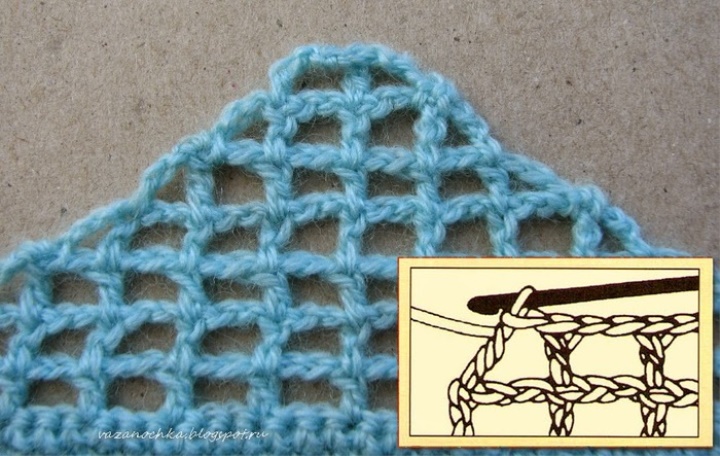
r the bevel, at the end of the row, after the penultimate bound column, the last bar is carried out, passing the air loops. The most recent beveled column should be higher than the rest of the bars of the grid, i.e. for the grid of Art. c / n the latter must be linked art.
s / 2n, for the grid of Art. c / 2n perform the last st. with / Зн.
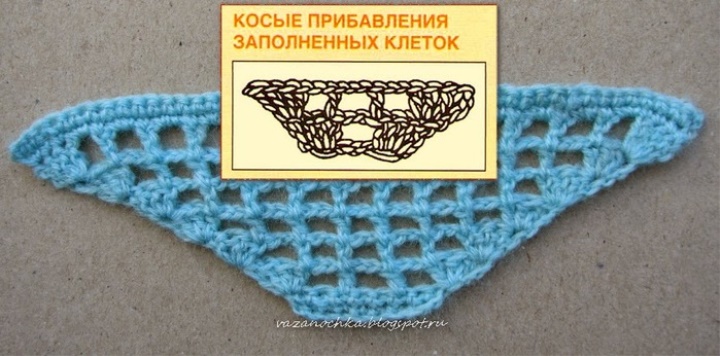
OBSERVATION OF COMPLETED CELLS
At the beginning of the row, perform the required number of air loops + 1 air for lifting. etc., then in the 1 st century. bind another 3 tbsp. s / n (for sirloin I only 2 items s / n). At the end of the series, in the last loop, tie in 3 tbsp. s / n (for sirloin I only 2 items of s / n), 3 patent st.
or 3 tbsp. c / 2n, then connect another 1 tbsp. "One size larger".
If you need to add several cells at the left side, then from the individual coil you need to tie a string of air loops of the appropriate length, then knit according to the scheme. The beginning and end of the new thread should be carefully disguised with the edge.
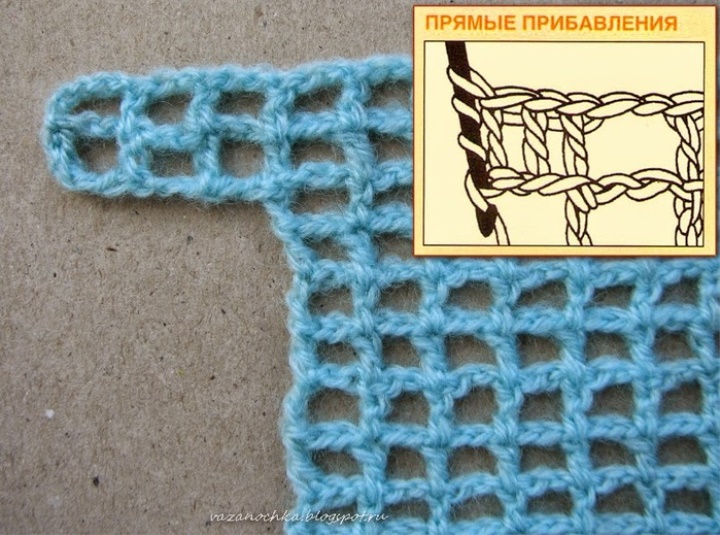
DIRECT ADDITIONS
For them, the corresponding number of air loops + air lifting loops must be connected at the beginning of the row, after which new cells are performed on the newly connected loops.
The addition at the end of the row is slightly more complicated. Add one empty cell at the end of the row in the following way: first perform the required number of air loops after the last column. After this, make 3 capers, insert the hook into the bottom of the last bound column and pull the thread a little longer than usual. Then pair all the capes in pairs. The result is a direct empty cell.
Here is another photo with knitting patterns in a loin technique
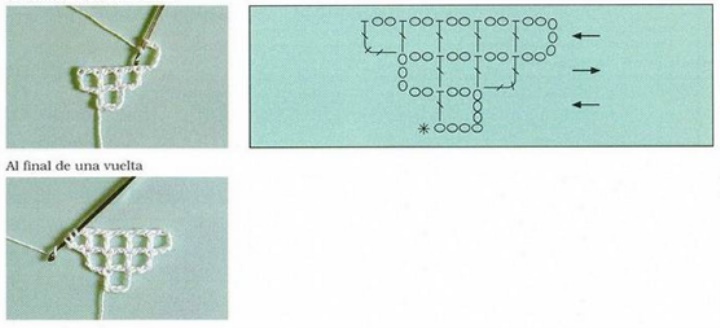
And here such beauty can be tied for decorating a house, as a gift, and for yourself a beloved